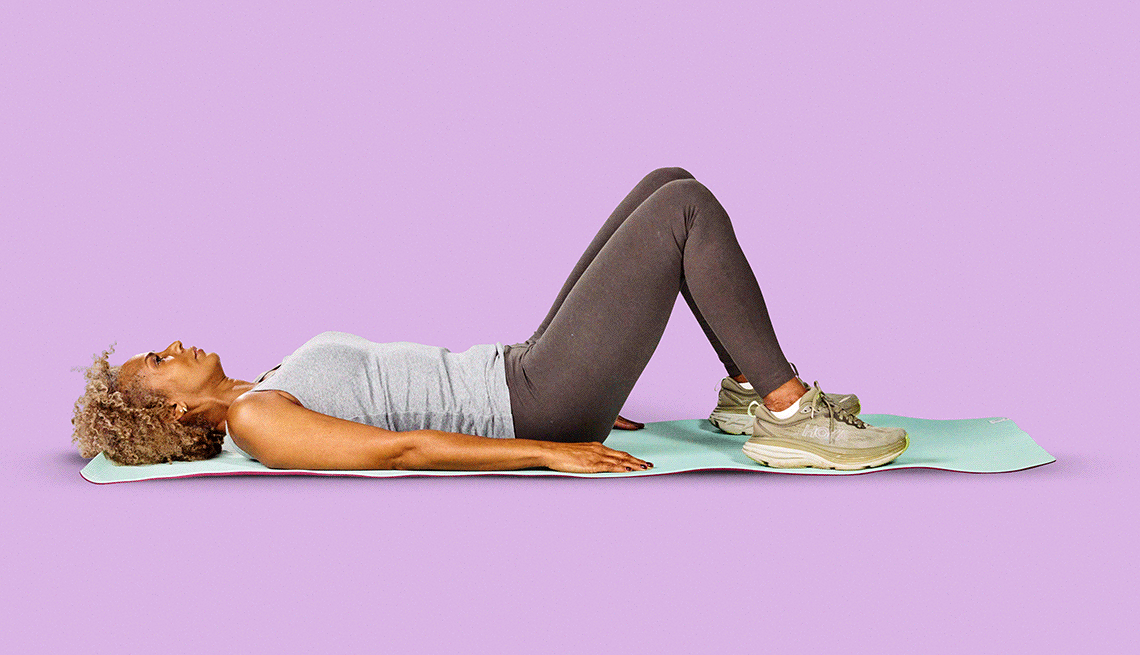AARP Hearing Center


These days, social media influencers and fitness blogs are full of “booty challenges” and tips on how to build a shapely backside. But strengthening your glutes isn’t just about aesthetics.
These large, powerful muscles in your buttocks support your pelvis and lower back, stabilize your hip joints and help you maintain good posture, says Greg Hartley, a geriatric physical therapist and associate professor at the University of Miami.
Your glutes are also critical for the activities of daily life, he says: “They help you be strong when you’re standing, so you can stand up straight. They help with balance and walking." And — importantly — they help with getting up from a chair or out of bed.
#1 Exercise Series
Do these to stay strong as you age
For older adults, who may not care about building a booty shelf, strengthening the glutes can be key to staying active, independent and steady on your feet. Doing glute exercises can also help with low back pain. In a study published in the journal Scientific Reports, researchers in Taiwan found that participants who did glute-strengthening exercises along with lower-back-stabilization exercises experienced a significant reduction in back pain, along with improved lower back muscle strength and flexibility, and hip muscle strength.
While many different exercises target the muscles in your buttocks, one of the simplest and most effective is the glute bridge, Hartley says. It strengthens your hamstrings and lower back muscles in addition to the glutes.
Hartley likes the glute bridge because it’s easy and safe. You can’t fall, because you’re already on the floor. And there’s no equipment involved.
How to do a glute bridge in four steps
Here is a step-by-step guide to performing a glute bridge. Remember to talk to your doctor before beginning any new exercise routine. And if you feel pain with movement, stop and consult a health care provider or physical therapist.
1. Lie on your back with your knees bent, your feet flat on the floor and your hands at your sides. Your feet should be about hip-width apart with your toes pointed straight ahead.
2. Squeeze your glutes, tighten your abs to lock your spine, and drive through your heels to push up your hips and buttocks. Your body should form a straight line from your knee to your shoulder. Make sure you don’t arch your back.
3. Hold the upright position for five seconds, then slowly (for a count of four) lower your body to the starting position. The movement should be slow and controlled.
4. Try to do 8 to 12 reps, or as many as you comfortably can based on your fitness level. Reaching your arms to the ceiling as you move will make it more challenging. Or, for an advanced variation, try single-leg bridges: start in the same position but extend one leg straight, then push up with the leg that remains bent.

































































You Might Also Like
Yoga Poses to Fight Osteoporosis
Build bone mass with these five easy moves
Doctor, How Can I Lose Weight?
A physician's advice for dropping a few pounds
25 Great Ways to Get a Flatter Stomach
Tips on how to lose belly fat and get a tighter tummy